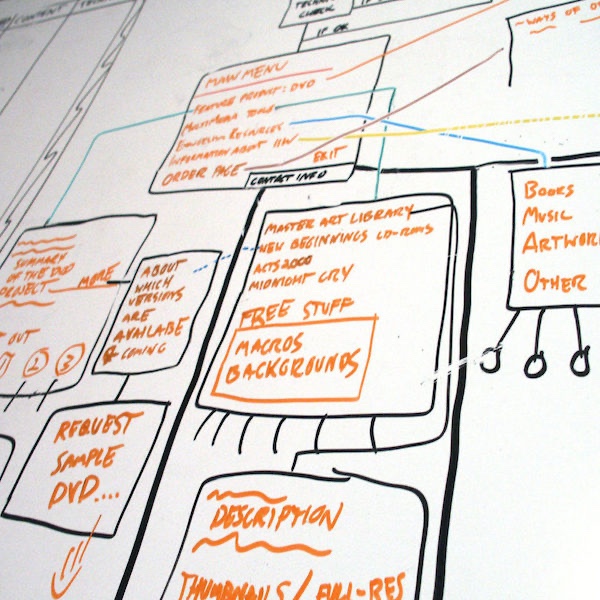In an increasingly consumer-centric digital market, UX research is an essential step in the design of a digital product. Be it any product, if it is designed without carefully researching users’ needs, it fails to meet the mark or worse does not even remotely do what it’s expected to do. Conducting comprehensive research to help answer pertinent questions is hence integral to designing a relevant and useful solution.
User research is typically conducted before the UX design phase as the gathered information can provide significant inputs in designing, guiding designers and helping them stay focused while simultaneously allowing them to utilize their creativity to address user challenges. However, after successful completion of the research step, it’s equally important to sort and analyze gathered information to make informed decisions that help shape the product’s design.
Before conducting UX research, however, it’s important to choose the right UX research methods and plan the study effectively to design a product that is relevant to users’ needs. Unfortunately, there is no one-size-fits-all method that can resolve all your research needs with the sweep of a magic wand. Finding the right approach will depend upon the type of product and target consumer group. Additionally, it’s worthwhile to consider a few other factors before getting your hands dirty.
Points to Consider in UX research
In the user research stage, aim to gather a complete understanding of your users and how the product will help them by understanding their perspectives, knowledge, emotions, behaviors, feelings, struggles, needs, experiences, and motivations. For starters, some examples of questions that UX research should answer are:
- Who is the intended target audience of the product that is being developed?
- What are users’ requirements?
- What are their likes, feelings, opinions, and attitude?
- What challenges would they like addressed with this product?
Why UX Research Is Integral at All 3 Stages of the Design Process
A common misconception is that user research is a one-time process that is applied initially. However, that couldn’t be further from the truth. To effectively incorporate UX research into your design, it should be applied at all three stages listed below:
Pre-Design Stage

This is the most preliminary UX research stage that focuses on gathering maximum knowledge regarding user information and requirements. Naturally, it demands extensive research conducted via a wide range of resources including reading resources and people. Designers interact with users to understand their behavior and psychology and then analyze the gathered information. The information obtained in this stage is used to define the objectives of the product.
In-Process Stage

After conducting the initial UX research, it’s time to begin the design stage, but that doesn’t mean the user research is done and dusted. In this stage, it’s necessary to learn about users by observing their behavior and problems that come up. By continuing research during the actual design phase, designers get the opportunity to test the UX design elements by observing how users react to the proposed solutions. Based on these behaviors, the designer can dynamically modify or reinvent solutions that are more in tune with user preferences.
Existing Product Research Stage

As the name suggests, this type of research is conducted for existing products. Since the products are already in use, the design team can conduct user testing in different environments and scenarios to learn about the product’s performance through actual user experiences. The gathered information is then analyzed and used to test drive further improvements in the product.
Which Research Techniques to Use
There are many approaches to UX research. Before conducting your own research study, consider these 3 research techniques that may be applied at all stages of the UX design process.
1. Quantitative vs. Qualitative
As the name suggests, quantitative methods like surveys deal with measurable data. On the other hand, qualitative techniques like interviews and usability testing focus on understanding the ‘why’ of a course of action.
2. Attitudinal vs. Behavioral
Attitudinal methods like interviews and user groups focus on what people say to understand their attitudes and beliefs. In contrast, behavioral techniques like usability testing study people’s actions to assess how they behave.
3. Context of Use
Context of use refers to the context in which participants are using the product. For instance, is it a natural or scripted use of the product or non-use? Or is it a hybrid of these?
When to Use Each Technique
The type of UX research methods you use will depend on the stage of the design process. However, it’s important to not limit yourself to a single method or technique. It’s best to combine two or more techniques according to the type of product and target group, at different stages for optimal benefits.
Beginning of the Design Process
Before putting your pencil to the paper, it is best to use a mixture of both qualitative and quantitative methods like surveys and field studies to understand users and their challenges.
After the First Stage
After establishing a rough sketch or concept of the design, it’s time to explore further by assessing whether the design has incorporated all user requirements. Since the preliminary design is already set at this point, it would be best to test it with the help of tools like card sorting and usability testing.
After Finalization of the Design
At this point, it’s finally time to evaluate it quantitatively with A/B testing and usability benchmarking.
Important Considerations in UX Research
Many factors need to be considered before you start preparing research questions that attempt to reveal user behavior, likes, and dislikes. UX Planet has compiled an extremely useful list of factors to considered:
- What are the factors of intrinsic (behavior driven by internal rewards or stimuli) as well as extrinsic motivation (behavior driven by external rewards like money and praise)?
- What will be the likely environment of the use of the product? For instance, will it be used indoors or outdoors? What will be the level of light or noise?
- What will be the lifespan of the product? Is it for a one-time or temporary use or longer?
Tips for Conducting UX Research
Once you are ready to begin conducting your research study, follow these tips to ensure you receive the most valuable feedback without wasting your own or your client’s time.
What Questions to Ask
Asking questions that lead to relevant information about specific user requirements and preferences is paramount to building a useful product. To gain a better understanding of the user, ask descriptive questions apart from a handful of essential objective types. While knowing what questions to ask is important, it’s equally essential to know what questions to avoid. It’s good practice to avoid leading questions that are likely to yield biased responses. For some great examples, Garrett Kroll, the senior designer at Khan Academy, created an elaborate list of questions UX designers should be asking.
Take Elaborate Notes
It’s a good idea to not only record participants’ responses, but also make note of their reactions, feelings, attitudes, and behaviors during research. The guiding principle is: what users say may not always correspond with what they do.
Consider creating a well-designed, living excel sheet to add client feedback and other notes. Having all your notes live in one place ensures that you can quickly refer to the feedback at any time during the UX research process. Lifehack has put together a list of 7 reasons why taking notes makes you more productive. Whether you do it by hand or digitally, taking notes allows you to highlight key points from the conversation that you may forget when trying to recall those points later.
Provide Clear Information & Instructions
Your UX research participants need to understand the context of the study and why it is important to the design process. If they understand the context of the study and its purpose, they will become more invested in its success, and are more likely to participate wholeheartedly. In addition, give clear instructions as to what kinds of questions they should expect, and from what perspective they should consider when responding. The client may have a great idea of what they want their product to look like, but perhaps this research could be an opportunity to encourage them to think about the product from the perspective of the target user. If your research participants understand the context and instructions, they will be able to provide you with a wide variety of feedback that you can refer to in the design process.
Conclude Research with Analysis
UX research must be followed by analysis to properly uncover the results of the study. After all, gathering information is useless if it’s not evaluated for effective implementation in design. Therefore, it’s crucial to evaluate and interpret information to obtain accurate insights that can help you make the right design decisions.
User research is an essential and extremely useful pre-design activity that helps designers create successful products that are in tune with user requirements and preferences. However, for maximizing its benefits, it’s important to choose the right combination of research techniques and carefully plan and execute both UX research and analysis for deep insights that shape the design of a product.
Btbean has demonstrated success in developing successful user-centric application software. Our team of design experts has a solid foundation and expertise in UX design and developing software solutions that can help your organization realize its business objectives. Contact us to discuss your requirements with one of our representatives. We look forward to hearing from you!






